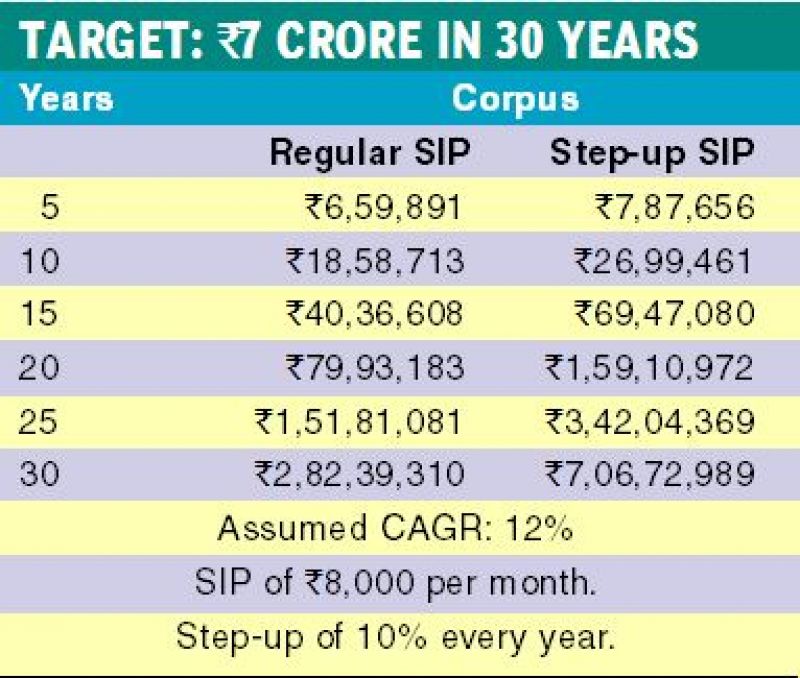Have you stepped up your investments this year?
This is important from the point of view of accelerating wealth creation as well as staying ahead of the dreaded inflation rate.

If you’re an investor, you should familiarise yourself with the concept of stepping up your investments. Whether you invest through mutual fund SIP, a PPF account, or an endowment plan, you need to periodically increase the amount you invest. This is important from the point of view of accelerating wealth creation as well as staying ahead of the dreaded inflation rate.

WHAT IS STEPPING UP OF INVESTMENTS?
As your income increases with time, so does your ability to save. The greater your income, the greater should be your savings. Therefore, you should be able to invest higher amounts every year with passing time. For example, when you were 22 years old, your income was Rs 15,000 a month and you were saving Rs 1,500 per month. But you are 30 years old now and earning Rs 60,000 a month and can save Rs 6,000 a month. Therefore, with higher savings, you should invest more so that you are able to create higher wealth for later years and steer clear of inflation.
HOW DO YOU DO IT?
Start investing early, and step up your investment every year. Let’s say your goal is to create a corpus of Rs 7 crore in 30 years. If you invest Rs 10,000 a month for 30 years in a mutual fund with a CAGR of 12 per cent, you get to just Rs 2.82 crore-woefully short of your target. However, if you step up your monthly contribution by just 10 per cent every year, you get to a whopping Rs 7.06 crore in that time span. So you are investing Rs 8,000 per month in the first year, Rs 8,800 in the second, and by the time you reach 30th year, you are investing nearly Rs 54,000 a month. These numbers sound astronomical today. But with each passing decade, you’ll see what inflation does to money.
WHY IS IT NECESSARY?
Inflation erodes the value of money with time. For example, Rs 100 in 2017 holds approximately the same value as Rs 12 in 1987, or Rs 28 in 1997, or Rs 48 in 2007. Let’s say your plan is to save Rs 1 crore for your retirement, which is in 30 years’ time. However, applying the same rate of inflation as the last 30 years, this massive figure of Rs 1 crore in 2048 would be roughly worth Rs 12 lakh today. If you were to go out of employment today, how long would you be able to survive on savings of just Rs 12 lakh? How soon will this money run out? Therefore, to be able to create higher levels of savings, you must step up your investments.
CALCULATING FUTURE MONEY NEEDS
Calculating your future income requirements is an incredibly tough thing. Nobody can know for sure what their income in the future would be, or how much inflation would have eroded it. However, we can look at our current spending habits and past inflation rates to predict our money needs. For example, let’s say your current monthly income requirement before any savings is Rs 40,000. You are 30 years old today. You plan to retire at 60. Your life expectancy is 80. Let’s assume your spending habits will be constant, and the average inflation rate over the next 30 years will be seven per cent. By age 40, your monthly spending would rise to Rs 78,700. By 60 it would be Rs 3.04 lakh per month. By 80, it would be Rs 11.78 lakh per month. In retirement between ages 60 and 80, you need 20 years to fund yourself without regular employment. A back-of-the-napkin calculation shows your retirement corpus needs to be at least '7 crore, locked in an instrument returning a minimum of eight per cent per annum — one per cent higher than the inflation rate — if you're to get through retirement without running out of money.

